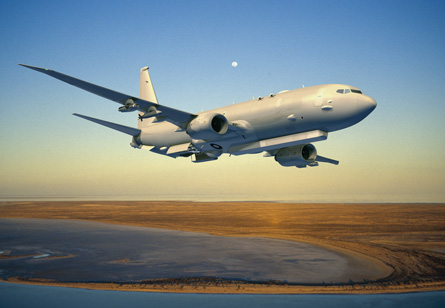Boeing has escalated a campaign to persuade the US Air Force to replace the Northrop Grumman E-8C joint surveillance target attack radar system (Joint STARS), warning that actual costs to modernise the 707-based surveillance fleet may exceed official estimates by up to five times.
Boeing's analysis of the cost to upgrade the E-8C with an active electronically scanned array (AESA) sensor, new engines, wide-band communications, modern avionics and a self-protection system, ranges between $10-$15 billion, said Egan Greenstein, a Boeing senior manager for business development.
That number compares to a $2.9 billion estimate developed jointly by the USAF and Northrop, which includes a "radar technology refresh", a communication network upgrade, a self-defence suite and cheek radar arrays.
"Any other figure besides the ones I have previously discussed, I can't validate," Northrop said in a statement.
The cost debate could figure prominently as the USAF nears the end of a wide-ranging, 18-month study in September. That analysis of alternatives will define how the USAF invests in the ability to track moving objects on the ground from the air - the key function of the Joint STARS APY-7 radar.
Since the first of 17 Joint STARS aircraft became operational in January 1991, however, radar technology has dramatically changed.
The US Navy has invested heavily in programmes to convert a portion of its maritime patrol fleet into armed overland surveillance platforms to rival the USAF's Joint STARS programme.
A small number of Lockheed P-3C Orions have been deployed with an AESA-based Raytheon littoral surveillance radar system (LSRS). Meanwhile, the USN is developing a new version of that sensor - the Raytheon advanced airborne sensor (AAS) - for the Boeing P-8A Poseidon.
In February 2010, Boeing unveiled a proposal to develop an airborne ground surveillance (AGS) variant of the P-8A to replace the Joint STARS fleet.
| | |
|---|---|
© Boeing |
Boeing estimates the full price to develop and deliver 17 P-8A AGS aircraft is $5.5 billion. Asked if the company is willing to commit to a fixed-price contract based on that figure, Greenstein replied it was too premature in the absence of details of the USAF requirements.
The P-8A would also carry a new, AESA-based sensor that would "leverage" the USN's investment in the AAS programme, Greenstein said.
Along with the P-8A's ability to carry weapons, the AESA radar proposal may set Boeing's proposal apart from the E-8C modernisation plan. It is possible the "radar technology refresh" described in Northrop's statement refers to upgrading the APY-7, rather than installing an AESA-based sensor.
Northrop officials have argued that it is unnecessary to arm the Joint STARS platform.
Source: Flight International

















